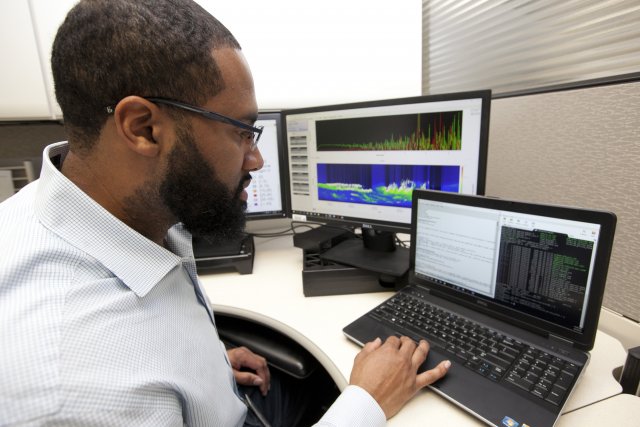Tracking Smoke with Models to Protect Public Health
Published April 23, 2018
Smoke plumes rising above a wildland fire are a visible sign of air pollution. What they emit, where they go, and how they are transported are all of interest to atmospheric modelers who are working to protect public health by applying the power of computer technology.
Plumes from wildland fires can disperse in communities close to the fire, prompting local officials to issue public health advisories. But emissions also can impact air quality in communities hundreds or thousands of miles away, when the smoke rises into the upper atmosphere and is moved by wind currents and finally deposited to the ground through rain and other processes.
“Long-range transport of smoke emissions is well recognized and can impact air quality across regions or globally,” says Tom Pierce, a modeling researcher at EPA. “We have developed a variety of tools to help predict smoke transport and impacts over an area.”

Models are an integral part of protecting public health from wildland fire smoke. They are used by air resource advisors to better predict when smoke in an area may be harmful to health. And state agencies use models to account for wildland fire smoke contribution to air quality as part of their planning process to meet air quality standards for particle pollution, ozone, and regional haze. With the increase in intensity and frequency of fires, some states impacted by wildfires are experiencing increased levels of PM and ozone.
EPA applies its CMAQ model, developed to support air quality regulations, to study wildland fire smoke and evaluate its impact on air quality. New approaches and methods developed for the model are making it possible to more accurately simulate and track emissions from smoke. As model sophistication improves, this tool could be used to help balance prescribed fire activity for land management with negative human health impacts due to smoke exposure.
“Right now we can do a reasonable job of estimating air quality impacts from fires, but there is a need to improve modeling to make them even more accurate and to better estimate health impacts so people can make informed decisions to minimize exposure,” says Kirk Baker, another modeler at EPA.
Research projects are under way to further advance the capabilities of modeling wildland fire emissions. Modelers at EPA are:
- Evaluating plume rise and differences in emission compositionfor flaming and smoldering components of wild and prescribed fires.
- Improving understanding of the optical properties of the chemical components of smoke to allow for better representation of plume chemistry evolution.
- Developing new approaches to differentiate wild and prescribed fire impacts on air quality and populations using a photochemical grid model. This research is supported by the EPA-funded STAR grant on Particulate Matter and Related Pollutants in a Changing World.
- Estimating prescribed fire emissions using permit information to enable more accurate air quality forecasts. This research is supported by the EPA-funded STAR grant on Dynamic Air Quality Management.
- Modeling to look back at contributions of wildland fire smoke emissions to ozone and particle pollution over the United States and more recently to look at individual fires to assess emissions and how they are transported.
These and other advances are leading to the development of more robust modeling tools for characterizing wildfire emissions, transport, and air quality impacts. Ultimately, the work will be used to help protect public health from exposure to wildland fire smoke.
